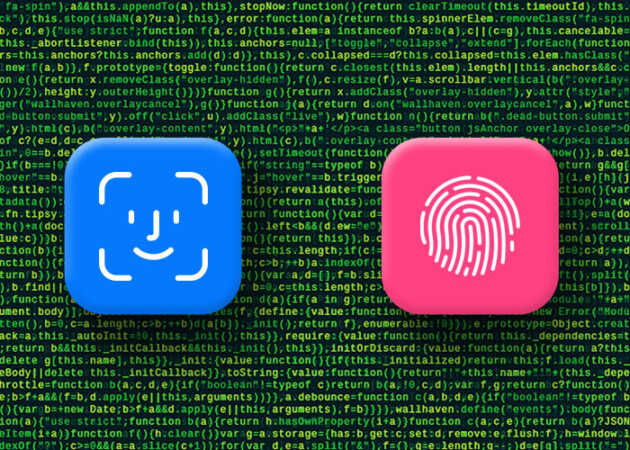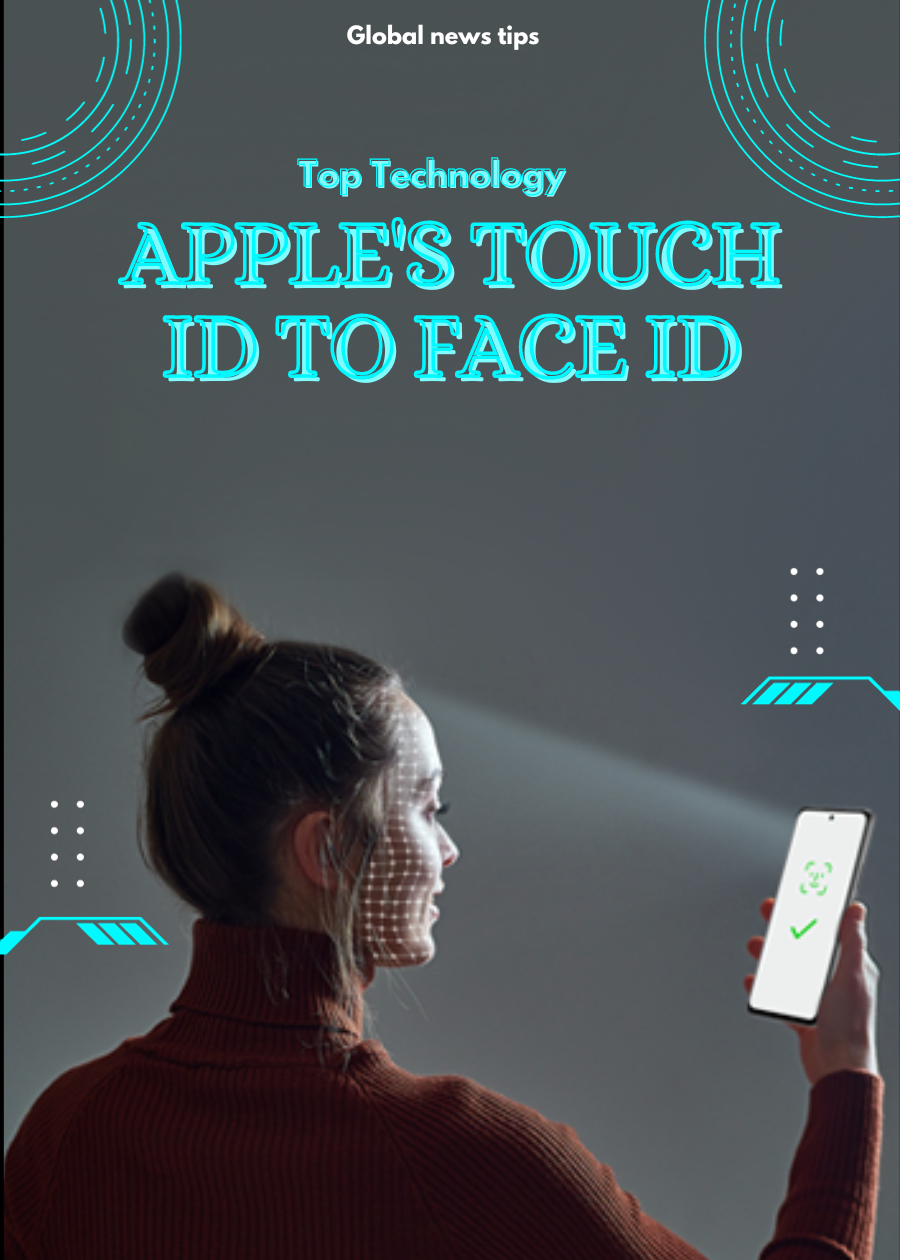In the fast-paced world of technology, change is the only constant. The realm of smartphone security is no exception, and recent reports suggest that Apple might bid farewell to its iconic Touch ID in favor of Face ID as the new standard. Let's delve into the intricacies of this shift and explore its implications for users, developers, and the broader smartphone market.
I. Introduction
A. Brief history of Touch ID and Face ID
Touch ID, introduced with the iPhone 5s in 2013, revolutionized smartphone security by integrating fingerprint recognition. Face ID, Apple's facial recognition technology, made its debut with the iPhone X in 2017, offering a new dimension to device unlocking and authentication.
B. The evolution of smartphone security
Over the years, the demand for enhanced security features has driven smartphone manufacturers to explore innovative biometric solutions. Touch ID and Face ID represent significant milestones in this evolutionary journey.
II. The Rumors Surrounding Touch ID
A. Recent reports on the demise of Touch ID
Rumors circulating in tech circles suggest that Apple might discontinue Touch ID in its upcoming iPhone models. These reports have ignited a wave of speculation and discussions among Apple enthusiasts and tech experts.
B. Speculations and user reactions
Users, accustomed to the convenience of Touch ID, are expressing mixed reactions to the potential departure of this beloved feature. Some are eager to embrace the advancements of Face ID, while others remain nostalgic for the tactile experience of Touch ID.
III. Face ID: The Present and Future
A. Advantages of Face ID
Face ID offers a seamless and secure user experience, utilizing facial recognition technology to unlock devices and authorize transactions. Its speed and accuracy have contributed to its widespread adoption among Apple users.
B. Apple's commitment to Face ID technology
Apple has demonstrated a steadfast commitment to advancing Face ID, integrating it into its flagship iPhone models. The technology continues to evolve, with each new iteration bringing improvements in accuracy and speed.
C. Integration in the latest iPhone models
The latest iPhone models showcase Apple's dedication to Face ID, with the technology becoming a central feature of the user experience. The absence of Touch ID in these models reinforces the narrative of Face ID as the future standard.
IV. Why Touch ID Might Be Phased Out
A. Technical limitations of Touch ID
Touch ID, while groundbreaking in its time, has certain technical limitations. The sensor's location on the device restricted its application, and the industry's shift towards full-screen displays presented challenges for its integration.
B. User preferences and feedback
Apple, known for its responsiveness to user feedback, might be considering the shift based on evolving user preferences. Face ID aligns with the growing trend of touchless interactions and may better cater to the demands of a modern user base.
V. The Future of Smartphone Security
A. The role of biometrics in mobile devices
As smartphones become increasingly integral to our daily lives, the importance of robust security measures grows. Biometrics, including facial recognition, fingerprint scanning, and even iris recognition, are expected to play a pivotal role in shaping the future of smartphone security.
B. Emerging technologies in the security landscape
Beyond Face ID, the industry is witnessing the emergence of new security technologies. From voice recognition to behavioral biometrics, manufacturers are exploring diverse avenues to enhance the security posture of mobile devices.
VI. Impact on User Experience
A. User adaptation to Face ID
Shifting from the tactile experience of Touch ID to the visual authentication of Face ID may pose a learning curve for some users. However, the intuitive nature of Face ID contributes to a swift adaptation process.
B. Convenience and security considerations
Face ID's combination of convenience and security has positioned it as a frontrunner in the realm of biometric authentication. Users appreciate the seamless and swift unlocking process without compromising on security.
VII. The Burden of Change
A. Challenges in transitioning from Touch ID to Face ID
Any significant technological shift comes with its challenges. Users accustomed to Touch ID may initially find themselves grappling with the change, necessitating effective communication and support from Apple.
B. Apple's strategies to ease the transition
Apple has historically excelled in managing transitions. The company is expected to implement strategies to ease users into the Face ID experience, providing resources, tutorials, and support to facilitate a smooth switch.
VIII. User Concerns Addressed
A. Privacy concerns with Face ID
The collection and storage of facial data have raised privacy concerns among users. Apple, recognizing the sensitivity of biometric information, has implemented stringent privacy measures to safeguard user data.
B. Apple's measures to address privacy issues
Apple's commitment to user privacy extends to Face ID. The facial recognition data is stored securely on the device, with Apple emphasizing that it does not have access to this sensitive information.
IX. The Perplexity of Smartphone Security
A. Balancing security and user experience
The evolution of smartphone security reflects the ongoing challenge of balancing robust security measures with a seamless user experience. Apple's strategic approach to Face ID exemplifies this delicate balance.
B. User education on biometric technologies
With the introduction of new technologies, user education becomes crucial. Apple is expected to invest in educating its user base about the advantages, security features, and proper usage of Face ID.
X. The Burstiness of Technological Shifts
A. The rapid evolution of smartphone features
Technological shifts in the smartphone industry happen rapidly. Users are accustomed to frequent updates and improvements, fostering an environment of excitement and anticipation for the next big innovation.
B. How users adapt to frequent changes
Smartphone users, known for their enthusiasm for the latest features, generally embrace technological shifts with open arms. The burstiness of these changes contributes to the dynamic and ever-evolving landscape of the industry.
XI. The Impact on the Market
A. Competitor responses to Apple's Face ID
Apple's decisions often set trends in the industry. Competitors are likely to respond to the potential phase-out of Touch ID by emphasizing their own biometric solutions, spurring healthy competition in the market.
B. Market trends in smartphone security
The market for smartphone security is dynamic, with user preferences and technological advancements driving trends. The shift towards Face ID by a tech giant like Apple is expected to influence the broader market's trajectory.
XII. Customer Loyalty and Brand Trust
A. Apple's reputation for innovation
Apple's reputation for innovation has fostered a loyal customer base. While changes may initially be met with resistance, Apple's track record suggests that users are likely to trust and embrace the company's vision for the future.
B. User loyalty in the face of technological changes
The loyalty of Apple users goes beyond individual features. It is rooted in the overall brand experience, including design, functionality, and seamless integration of hardware and software. Users may adapt to the change with trust in Apple's commitment to excellence.
XIII. The Ripple Effect on App Developers
A. App integration with biometric technologies
App developers continually adapt to the evolving features of smartphones. The potential widespread adoption of Face ID may prompt developers to optimize their applications for seamless integration with this technology.
B. Challenges and opportunities for developers
While challenges may arise in adapting existing apps to the new authentication method, developers also have an opportunity to explore innovative solutions that leverage the capabilities of Face ID, enhancing the overall user experience.
XIV. Addressing Common Misconceptions
A. Debunking myths about Face ID
As with any new technology, misconceptions may arise. Addressing and debunking these myths is crucial for users to make informed decisions about embracing Face ID as the new standard.
B. Clarifying the benefits of Face ID
Providing clear and concise information about the benefits of Face ID, such as enhanced security and user convenience, is essential in dispelling doubts and encouraging user acceptance.
XV. Conclusion
A. Recap of the shift from Touch ID to Face ID
The potential retirement of Touch ID marks a significant chapter in the evolution of Apple's smartphone security. Face ID, with its advancements and user-centric design, emerges as the frontrunner for the future.
B. Anticipating future developments in smartphone security
As technology continues to advance, the landscape of smartphone security will inevitably undergo further transformations. Apple's commitment to innovation suggests that Face ID is not just a current standard but a stepping stone to even more sophisticated security measures.








